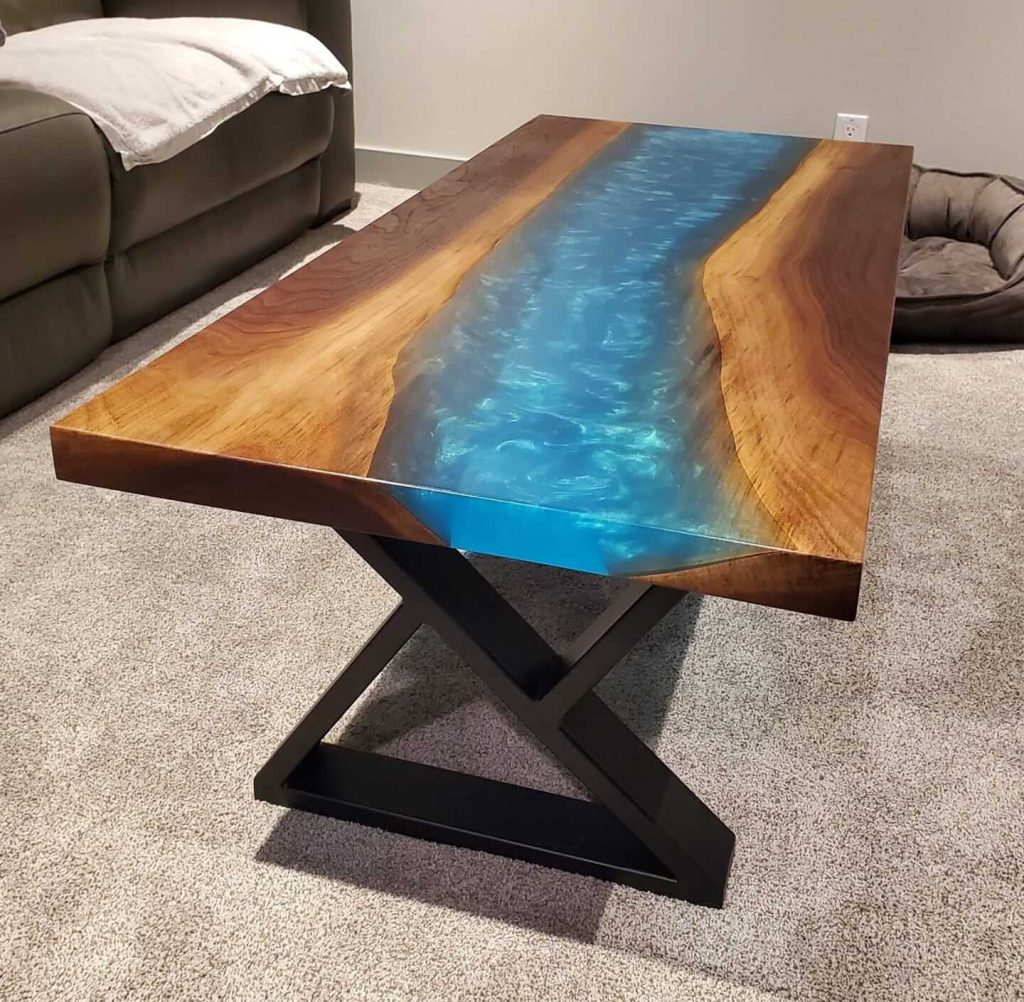When it comes to woodworking and crafting, selecting the right type of resin can significantly impact the quality and durability of your projects. But what exactly is the difference between epoxy and resin? While the terms are often used interchangeably, understanding their distinct characteristics and applications is crucial for any craftsman or DIY enthusiast.
What is Epoxy?

Epoxy, often referred to as polyepoxide, is a type of resin obtained by mixing specific chemical compounds—typically a resin and a hardener. When these components are combined, they undergo a chemical reaction resulting in a hard, durable plastic-like material (The Epoxy Resin Store, n.d.). Epoxy is favored for its strength and resistance to wear and tear, making it ideal for high-stress applications such as floors, countertops, and as a protective coating in boating and automotive parts.
What is Resin?

Resin, on the other hand, refers to a broad category of viscous substances that are plant-derived or synthetically produced. Synthetic resins, which include epoxies, are used extensively in the production of plastics and other composites. They are versatile materials that can be engineered to exhibit a range of properties, from high rigidity to flexible formulations, adapting to various industrial needs (The Epoxy Resin Store, n.d.).
Types of Resins and Their Uses
- Urethane Resin: Known for its robust and durable finish, urethane resin is often used for projects that require a high gloss, protective finish. It’s particularly effective for coating metals, wood, and concrete surfaces.
- Polyester Resin: This type of resin is less expensive and cures very hard, making it a popular choice for marine applications, like boat building, and for making rugged molds and fixtures.
- Casting Resin: With a thinner consistency, casting resin is perfect for crafts and projects that require pouring into molds, such as figurines, jewelry, and decorative items. Its slow curing time allows it to fill and seal even the smallest spaces for detailed replication (L’Erario, 2008).
- Epoxy Coating Resin: Unlike casting resin, epoxy coating resin has a thicker consistency and cures faster, making it ideal for surface coating applications where durability and water resistance are essential.
For more detailed information on specific resin types and to compare products, you can visit The Epoxy Resin Store.
Choosing the Right Resin
Selecting the right type of resin depends largely on the project at hand. Factors to consider include the desired finish, the required strength and flexibility, the curing time, and the application method. For detailed work requiring fine finishes, such as jewelry or intricate furniture details, a casting resin may be more appropriate. Conversely, for projects requiring a tough, protective layer, such as floors or tabletops, epoxy coating resin is advisable (L’Erario, 2008).
Safety Precautions
Working with resins requires caution. Always wear protective clothing and a breathing mask, especially when working in enclosed spaces. Ensuring proper ventilation and adhering to the manufacturer’s mixing ratios are critical to avoid potential hazards and achieve the best results.
Read about: Sealing before pouring resin
Conclusion
Whether you’re a seasoned woodworker or a hobbyist, understanding the differences between epoxy and other types of resins can enhance the quality and longevity of your projects. By selecting the appropriate resin type and following safety guidelines, you can achieve professional-grade results in your crafting and woodworking endeavors.
References
- L’Erario, Joe. Wood Finishing Simplified. Popular Woodworking Books.
- The Epoxy Resin Store. (n.d.). Epoxy vs. Resin Explained. Retrieved from https://www.theepoxyresinstore.com/blogs/news/epoxy-vs-resin-explained